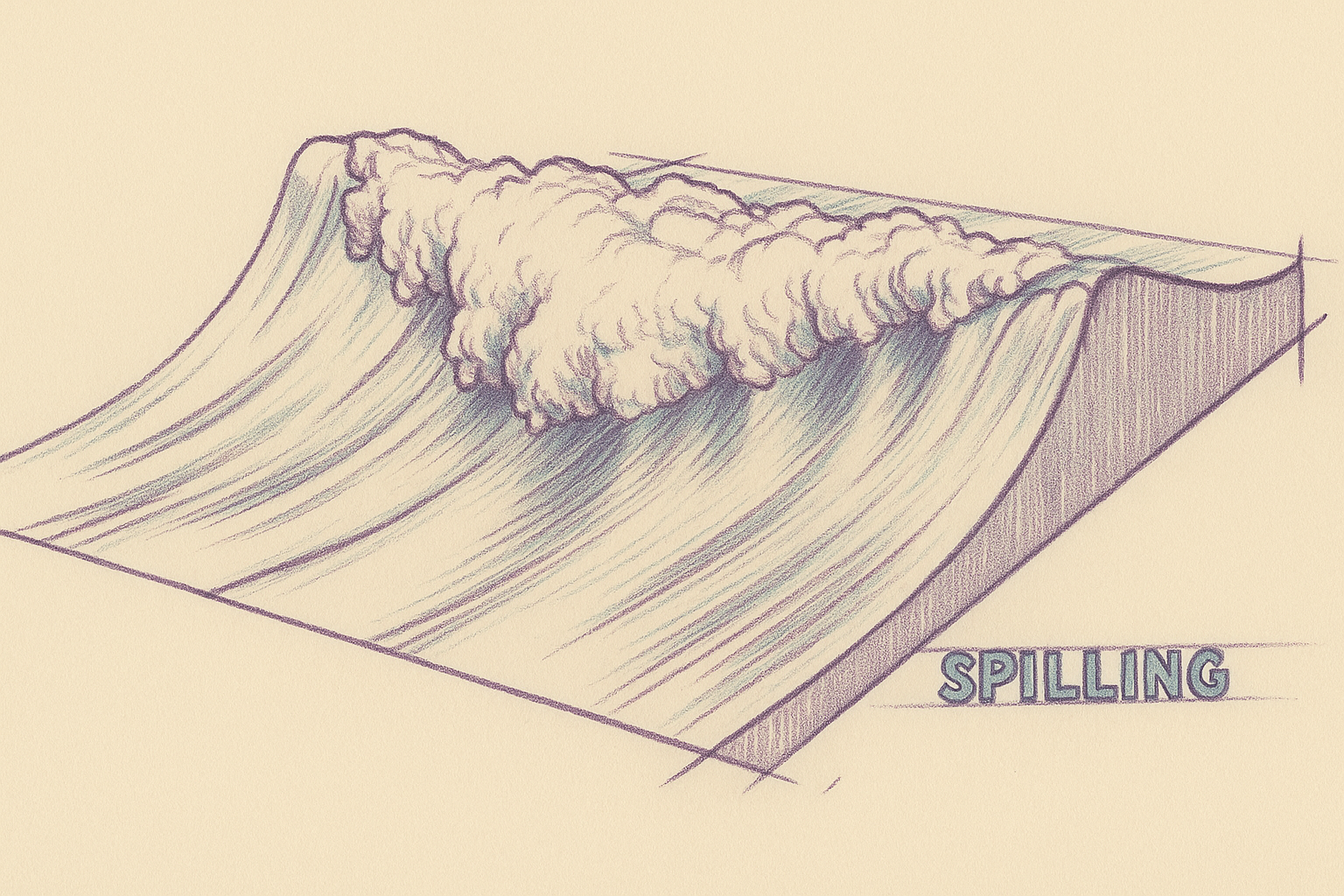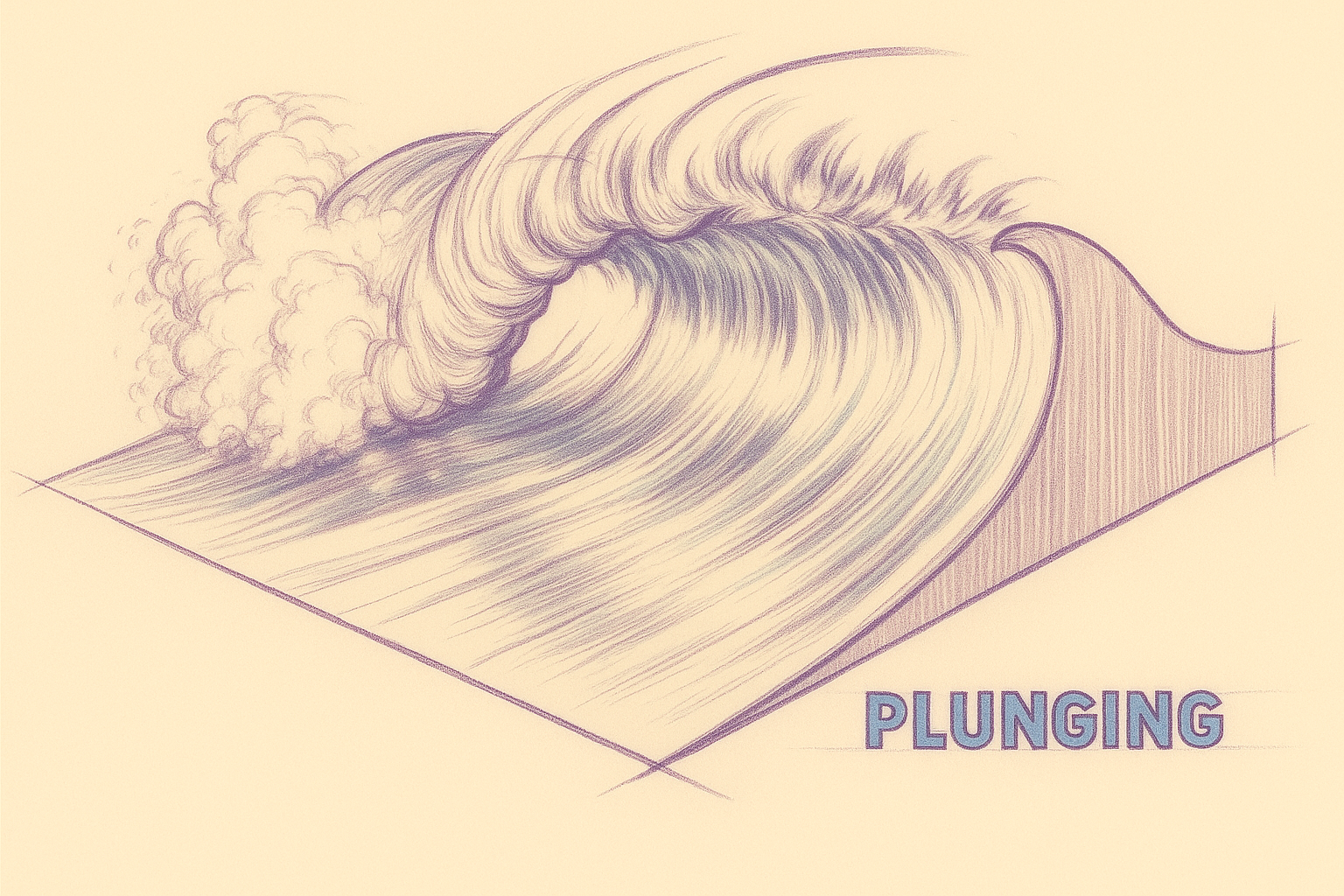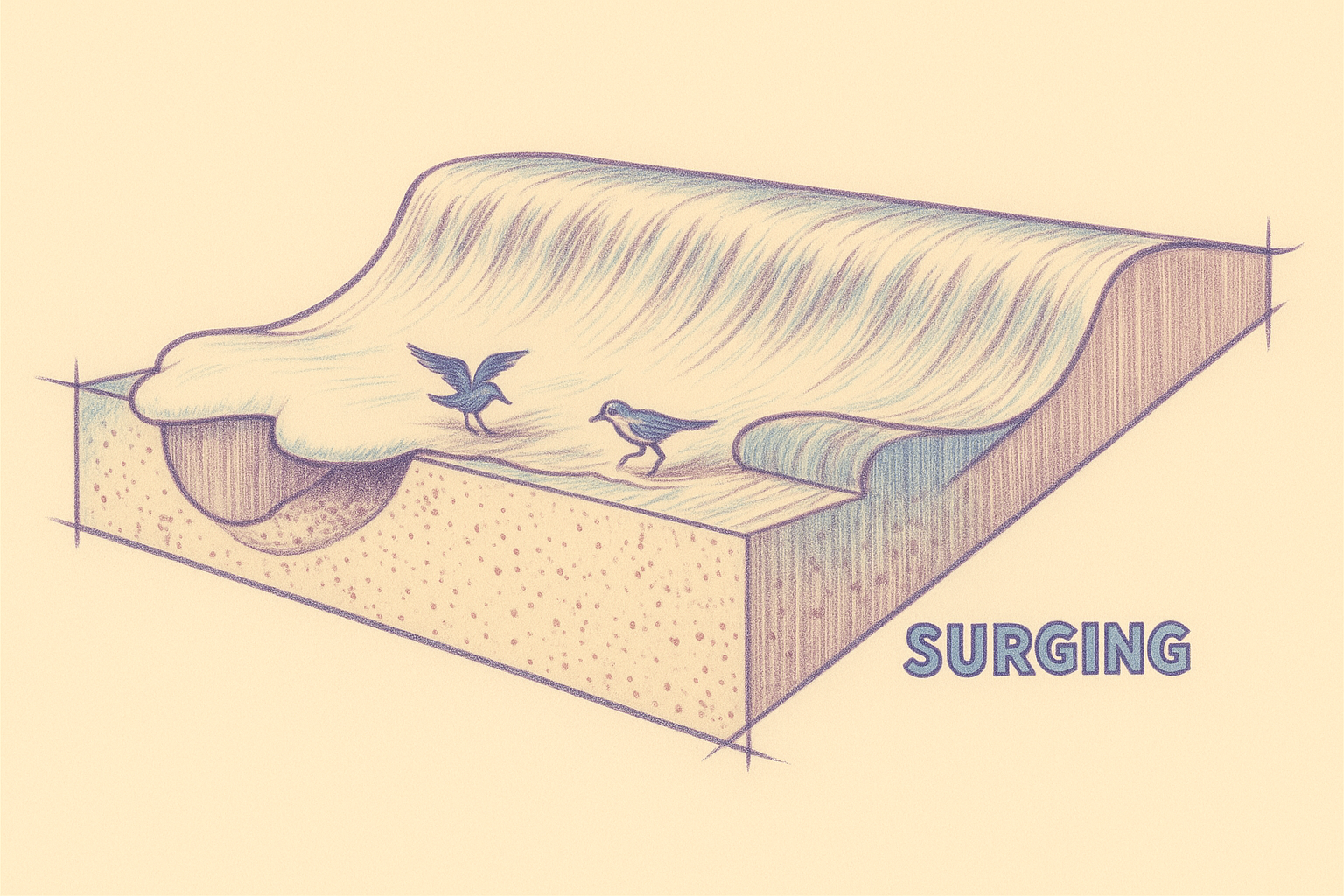The Types of Waves
The ocean is never still. Each wave carries energy, form, and motion — a dynamic expression of nature’s rhythms. By understanding different wave types, we navigate the sea more effectively and start to see the ocean as a mirror of patterns in life and energy.
Spirals in Motion: The Connection of Nature
Spirals are nature’s way of channeling energy efficiently. Waves curl, roll, and crash along these spirals, revealing patterns that are physical, mathematical, and profoundly beautiful.
Rolling (Spilling) Waves
Description: gentle waves that slowly spill forward as the crest collapses
Characteristics: smooth, foamy, and predictable
Visual cue: white water gently tumbling down the face
Perfect for beginners and for understanding gradual energy release.

Plunging Waves
Description: waves that curl sharply, creating a “tube” before crashing
Characteristics: intense, fast‑moving, highly dynamic
Visual cue: a hollow curl, often sought by advanced surfers

Collapsing Waves
Description: waves that lose their shape abruptly, collapsing without much forward travel
Characteristics: sudden, chaotic, less predictable
Visual cue: a chaotic splash rather than a graceful curl
Surging Waves
Description: waves that don’t break traditionally but surge up the shore with strong momentum
Characteristics: fast, shallow, powerful
Visual cue: a wall of water pushing directly onto the beach

Seeing Waves Beyond the Ocean
Understanding wave types is both practical and perspective‑shifting. Wave patterns echo in hurricanes, galaxies, and human systems. Observing waves hones our sense of rhythm, change, and motion.
Bringing Waves to Life
- Animated diagrams of crest and trough for each wave type
- Short video clips or GIFs of rolling, plunging, and surging waves
- Interactive overlays to reveal physics and dynamics
Next Steps
- Spot these types at your local beach or in surf videos
- Reflect on patterns: how does energy in your life move like these waves?
- Explore spirals and energy flows in nature